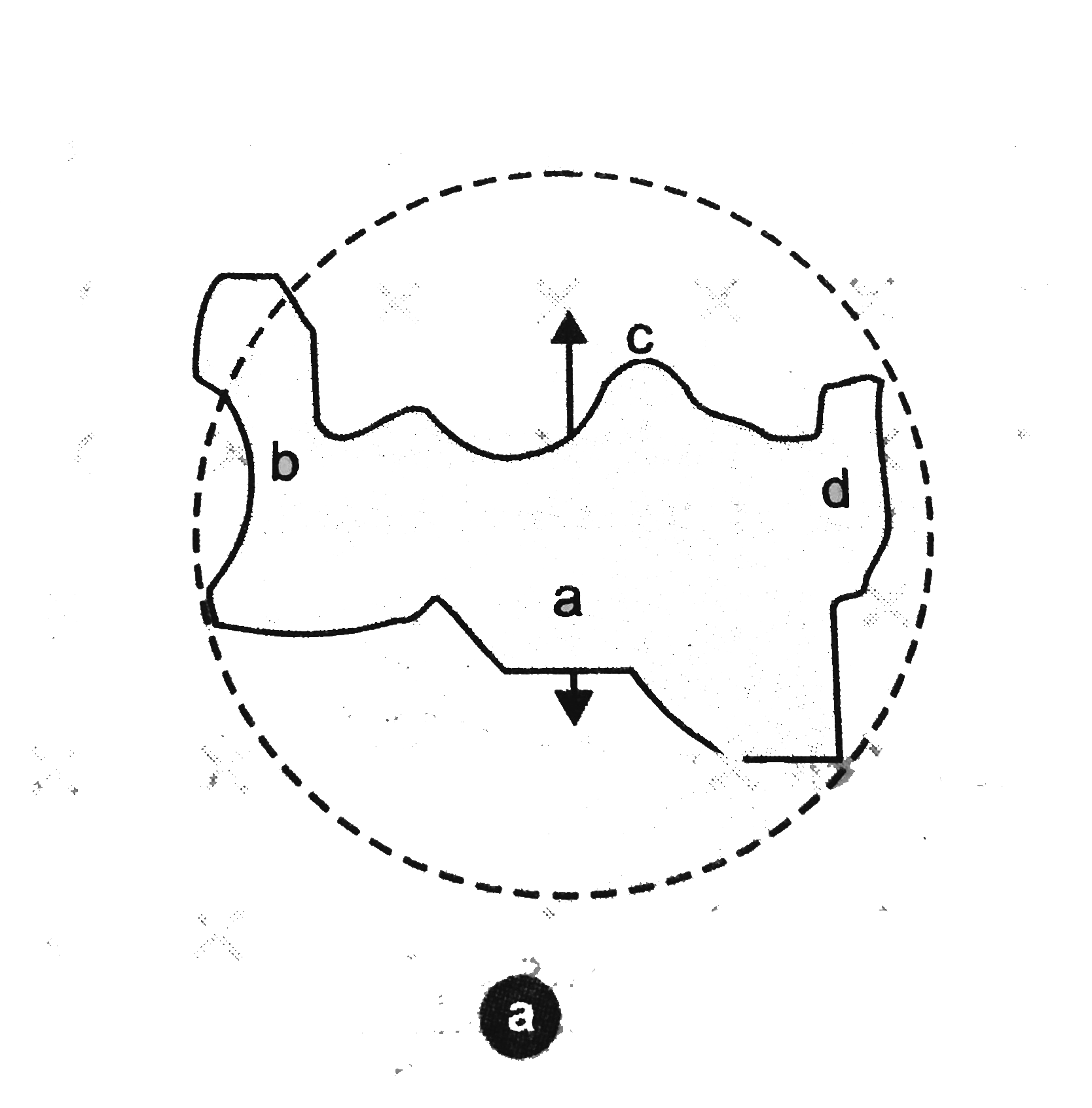Give an illustration of determining direction of induced current by using Lenz's law.
Consider a uniform magnetic field with its field lines perpedicular to the plane of the paper and pointing inwards. These field lines are represented by cross (x) as shown in Figure (a).
ii. A rectangular metalic frame ABCD is placed in this magnetic field, with its plane perpendicular to the field. The arm AB is movable so that it can slide towards right or left.

iii. If the arm AB slids to our right side, the number of field lines (magnetic flux) passing through the frame ABCD increases and a current is induced.
iv. As suggested by Lenz's law, the induced current opposes this flux increase and it tries to reduce it by producing another magnetic field pointting outwards i.e., opposite to the exiting magnetic field.
v. The magnetic lines of this induced field are represented by red-colored circles in the Figure (b). From the direction of the magnetic field thus produced, the direction of the induced current is found to be anticlockwise by using right-hand thumb rule.
vi. The leftward motion of arm AB decreases magnetic flux. The induced current this time, produces a magnetic field in the inward direction (red-colored crosses) i.e., in the direction of the exiting magnetic field (Figure(c)).
vii. Therefore, the flux decrease is opposed by the flow of induced current. From this, it is found that induced current flows in clockwise direction.
Similar Questions
Figure shows planar loops of different shapes moving out of or into a region of a magnetic field which is directed normal to the plane of the loop away from the reader. Determine the direction of induced current in each loop using Lenz's law.

View SolutionLenz's law gives us the direction of current induced in a circuit. According to this law, the polarity of induced e.m.f is always such that is opposes the change in magnetic flux responsible for its production. It means if e.m.f. is induced due to increase in magnetic flux, the direction of e.m.f. induced is such as to oppose the increase in magnetic flux. The reverse is also true.
Read the above passage and answer the following questions :
(i) Does Lenz's law violate the principle of conservation of energy ?
(ii) Name any other rule for finding the direction of induced current.
(iii) What does Lenz's law imply in day to day life?
View Solution
Knowledge Check
Statement-1 : In a given situation, the direction of induced current given by Lenz's Law and Fleming's right hand rule is the same.
Statement-2 : Statement of both the laws is the same.AABBCCDDUse Lenz's law to determine the direction of induced current in the situation described by Fig.
(a) a wire irregular shape turning into a circular shape (b) a circular loop being deformed into a narrow straight wire. The across indicate the magnetic field into the paper and the dots indicate magnetic field out of the paper.

 Aalong abcdaBalong adcbaCinto the plane of the paperDout of the plane of the paper
Aalong abcdaBalong adcbaCinto the plane of the paperDout of the plane of the paperLenz's law determines the direction of
APotential differenceBcurrent in the circuitCinduced current in the circuitDNone of the above
Use Lenz's law to determine the direction of induced current in the situations described by Fig. 6.04 :
(a). A wire of irregular shape turning into a circular shape,
(b) A circular loop being deformed into a narrow straight wire.

View SolutionUse Lenz's law to determine the direction of induced current in the situation described by Fig.
(a) a wire irregular shape turning into a circular shape (b) a circular loop being deformed into a narrow straight wire. The across indicate the magnetic field into the paper and the dots indicate magnetic field out of the paper.


View SolutionUse Lenz's law to determine the direction of the induced current when a rectangular conducting loop abcd is moved into a region of magnetic field which is directed normal to the plane of the loop away from the reader.

View SolutionLenz's Law || Direction OF Induced Current || Example on Lenz's Law
View SolutionLenz's law cannot be used to find the direction of induced current. (True/False)
View Solution
